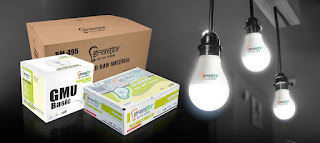WHAT IS THE RAW MATERIAL OF A LIGHT BULB :
INTRODUCTION-
To begin with, you should be aware that a light bulb comprises three essential components: the glass casing, the filament that emits light, and the base.
THE LED BULBS RAW MATERIALS
Elements Of for glass - sand, soda ash, and limestone—are combined and fired to create the shell. Air nozzles blow the molten glass into molds through holes in the conveyor belt as it moves along, giving the body its shape.
RAW MATERIALS USED IN LIGHT BULBS -
The focus of this section and the one that follows (The Manufacturing Process) will be incandescent light bulbs. Before tungsten became the preferred metal in the early 20th century, various materials, including those described before, were utilized for the filament. Despite being very delicate,
Tungsten filaments are resistant to heat up to 4500 degrees Fahrenheit (2480 degrees Celsius). The invention of tungsten filaments is regarded as the most significant achievement in light bulb technology because it allowed for inexpensive production and a longer lifespan than any other material.
Typically, nickel-iron wire is used for the connecting or lead-in wires (called dumet because it uses two metals). To increase the wire's adherence to glass, it is dipped into a borax solution. The filament's lifespan is extended by the glass bulb, which includes a mixture of gases, often argon and nitrogen. Gases are introduced into the bulb to replace the air. The entire assembly is stabilized on a standardized base. The base often referred to as the "Edison screw base," was first constructed out of brass and insulated with plaster of Paris before being replaced with porcelain. To provide a more robust basis, aluminum is now used outside, and glass is used to protect the interior.
CONCLUSION-
Another recent innovation is the "radio-wave bulb," a light source that generates light by sending radio waves to a mercury cloud, emitting ultraviolet light. A phosphor coating on the bulb subsequently transforms the ultraviolet radiation into visible light. These bulbs have a longer lifespan of ten years and require only 25% as much energy as incandescent bulbs. They can even be used in place of incandescent bulbs entirely.GRAMLITE is the RED BULB MANUFACTURERS in our country; they are running a successful business.



Comments
Post a Comment